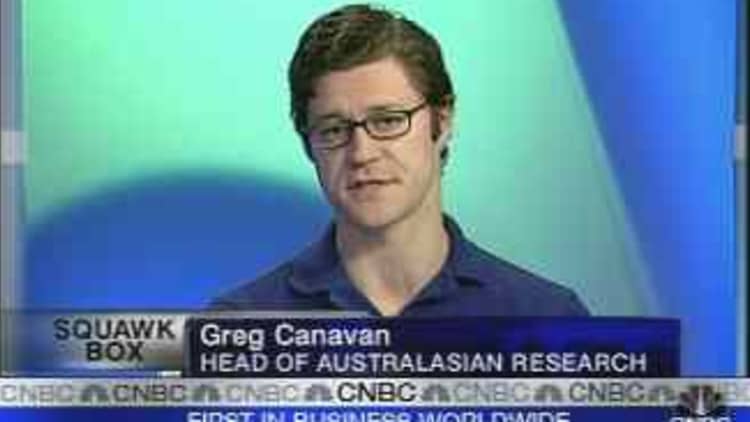U.S. gold futures extended a record-breaking advance across the $1,000-an-ounce threshold Thursday, as investors sought protection from the sliding dollar, and an inflation hedge as oil prices hit all-time highs.
Investors see gold as a hard asset and safe haven amid economic uncertainties and
dysfunctional financial markets.
As long as the dollar continues to erode, bullion looks set to continue its climb, having lagged other commodities by some measures.
But when adjusted for inflation, gold is only about halfway to a record set in 1980, unlike oil, which -- at its current levels above $100 a barrel -- has never been so expensive in absolute or "real" terms.
The dollar plunged below 100 yen for the first time in more than a decade Thursday and hit a record low versus the euro as worries deepened on Wall Street that the United States had entered a recession.
"It is a reflection of oil prices hitting $110 (a barrel) and a recycling of petrodollars. We are seeing countries exporting oil putting money into the euro, yen and gold," said Frank Holmes, chief executive of U.S. Global Investors in San Antonio, Texas. "Short-term, gold is due for a correction, long-term it is valued at over $2,000 an ounce, because all commodities are above their inflation-adjusted 1980 prices except for gold."
At 11:30 a.m. EDT (1530 GMT), the active contract for April delivery was up $15, or 1.5 percent, at $995.50 an ounce. It peaked in morning floor trade at $1,001.50 on the COMEX division of the New York Mercantile Exchange.

Spot gold reached $999.90 an ounce, and was trading at $994.90/5.80, up from Wednesday's New York close at $981.90/2.70.
Gold is up 20 percent this year. In January it surpassed the historic milestone from January 1980. That year, bullion peaked at $850 an ounce against a backdrop of high inflation linked to strong oil prices, the Soviet intervention in Afghanistan and the Iranian revolution.
"In the near term, the market is still strong, and it will remain strong as long as the Fed rate-cutting cycle is intact, and the dollar remains on the defensive. I think that is a function of the credit crisis which is still ongoing," said James Steel, metals analyst of HSBC in New York. "It will certainly get more attention, and that's generally good for the market and it will add to liquidity."
The nominal highs from 1980 would now, if adjusted for inflation, be worth more than $2,000, according to precious metals research firm GFMS.
"We are in uncharted territory, and we don't know where we are going. All we know is that the higher the price, the bigger the volatility," said George Gero, vice president of RBC Capital Markets Global Futures in New York.

